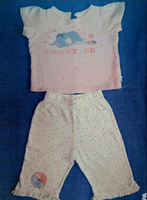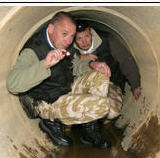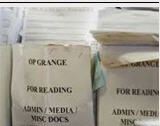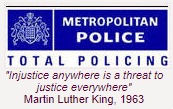Ben Salmon: Scapegoat
Page 1 of 1 • Share
 Ben Salmon: Scapegoat
Ben Salmon: Scapegoat

Published posthumously, this eclectic novel takes the reader on a tumultuous journey through a tangled, mysterious web, as the diverse characters attempt to solve the historical case of a missing child. Peppered with poignant quotes and irreverent observations on the capriciousness of life, Ben Salmon writes with a wisdom beyond his years.
Based loosely on a true story, this is a tale of mystery and intrigue, heavily influenced by the alternative writings of acclaimed author Haruki Murakami.
Email from Ben's mum
Thank you for your deeply kind words and support last November, when my son Ben Salmon very sadly and suddenly passed away.
Prior to his passing, Ben had just completed writing his first book, an achievement of which he was extremely proud. Unfortunately, he was not able to see it published. I am, however, happy to say that with the generous help of Nicole Morgan, Publisher, his book, 'Scapegoat', is now available on Amazon.
The book is loosely based around the Madeleine McCann case, and so I thought, as Ben's friends and acquaintances, and sharing an interest in Maddie, you may also be interested to see Ben's book.
https://www.amazon.co.uk/gp/product/B0BLFQWJH8/ref=ppx_yo_dt_b_asin_title_o00_s00?ie=UTF8&psc=1&asin=B0BKTQPX72&revisionId=4c6e7558&format=1&depth=1
https://www.amazon.com/dp/B0BLFQWJH8/ref=redir_mobile_desktop?_encoding=UTF8&qid=&qid=&ref_=tmm_pap_swatch_0&sr=&sr=%2Faw%2Fd%2FB0BLFQWJH8%2Fref%3Dtmm_pap_swatch_0%3Fie%3DUTF8
It's the first anniversary of his death today. RIP Ben

____________________
PeterMac's FREE e-book
Gonçalo Amaral: The truth of the lie
CMOMM & MMRG Blog
 MAGA
MAGA
 MBGA
MBGA
 Re: Ben Salmon: Scapegoat
Re: Ben Salmon: Scapegoat
Thank you Jill, I just purchased the kindle edition (which is free for prime members)
____________________
“It was the best of times, it was the worst of times, it was the age of wisdom, it was the age of foolishness, it was the epoch of belief, it was the epoch of incredulity, it was the season of light, it was the season of darkness, it was the spring of hope, it was the winter of despair.”
― Charles Dickens, A Tale of Two Cities

Vera Krista- Posts : 509
Activity : 578
Likes received : 71
Join date : 2021-03-07
 Re: Ben Salmon: Scapegoat
Re: Ben Salmon: Scapegoat
WHO WAS THE ORIGINAL SCAPEGOAT?
A common dictionary definition of ‘scapegoat’ is this:
A person who is blamed for the wrongdoings, mistakes, or faults of others, especially for reasons of expediency.”
But this definition is also commonly given:
“(in the Bible) a goat sent into the wilderness after the Jewish chief priest had symbolically laid the sins of the people upon it “.
The original scapegoat, then, was the ceremony of symbolically placing the sins of the Israelites onto one of two goats. According to the Bible, God told Moses how to conduct this ceremony, soon after He rescued them form Egypt and they were in the wilderness. This occurred around 1490 BC. The ceremony occurred once a year on what was named ”The Day of Atonement”, or the Day of Reconciliation (of God to man).
Here are a couple of explanations I found:
What was the scapegoat in the Bible?
In the Bible, a scapegoat is one of a pair of kid goats that is released into the wilderness, taking with it all sins and impurities, while the other is sacrificed. The concept first appears in the Book of Leviticus, in which a goat is designated to be cast into the desert to carry away the sins of the community.
Christ Our Scapegoat
" ...and the LORD hath laid on him the iniquity of us all". Isaiah 53 v 6
An Old Testament ceremony comes to life in Leviticus 16, which helps to understand our text. It is a ceremony enacted each year on the Day of Atonement. It is a ceremony that graphically explains “Atonement” or “How God Deals With the Sin of Men.” It is the ceremony of the two goats, one of them being a scapegoat.
Choosing the Scapegoat
We read of it in Leviticus 16, beginning at verse 7, speaking there of the high priest:
And he shall take the two goats, and present them before the LORD at the door of the tabernacle of the congregation” and what follows.
During the morning service, two look-alike goats, of the same value and age and colour, are brought to the high priest. The high priest places the goats next to each other
“with their backs to the people and with their faces towards the sanctuary” (Edersheim).
The high priest then draws two lots, laying one on the head of each goat. The one lot says that the goat is for the Lord, and the other lot says that the goat is a scapegoat. A scarlet-red cloth is tied around the throat of the goat designated for the Lord, and a scarlet-red cloth is tied to one of the horns of the goat designated as scapegoat. The goat, designated for the Lord, is slain as a sin offering-sacrifice.
Meanwhile, the scapegoat is turned around to face the people. After the one goat has been slain, the high priest returns to the other goat, facing the people he solemnly lays both hands on the head of this scapegoat, as we read in verse 21:
“and confess(es) over him all the iniquities of the children of Israel, and all their transgressions in all their sins, putting them upon the head of the goat.” All the iniquities of the people are laid upon this scapegoat.
Led Into the Wilderness
Then a strange scene is witnessed, according to Edersheim. Some priests would take the sin-burdened scapegoat through the crowd and through one of the gates of the city, and hand the scapegoat to a man appointed especially for that purpose, who in turn would take this scapegoat far into the wilderness and let it loose in a so called “uninhabited land.” Thus ends the ceremony of the two goats: the goat for the Lord, and the scapegoat.
This ceremony is a prophetic representation of what would happen some day to Jesus Christ. Notice that at a certain point, when it was determined which one would be the scapegoat, this animal was turned around to face the people. Pontius Pilate took Jesus at a certain point in the trial, and set Him to face the people, and said, “Behold the Man” (John 19:5). Jesus stood before Israel as a designated Scapegoat, just as He was about to be led forth, bearing the iniquity of the people.
Sins are Laid on the Scapegoat
Notice how those iniquities were laid on the scapegoat. Very solemnly the high priest placed both hands on the head of the scapegoat, and confessed all the sins of the people. These sins were laid on the scapegoat by the Lord God, even as the high priest, on behalf of the people, confessed his own and the people’s iniquities and transgressions and sins.
This load of sin was laid on the scapegoat by way of confession. Therefore, removal of sin can only come by way of confession. Notice how the scapegoat, laden with iniquity, transgressions and sins was taken out of the camp and out of the city, into the wilderness, even into a place, literally called “uninhabited land.” The sins laid upon the head of the scapegoat are taken away from the people and removed to a forgotten place, not to be found any more, as it says in Psalm 103:12,
“As far as the east is from the west, so far hath he removed our transgressions from us.”
Finally, notice that the ceremony of the scapegoat coincided with the goat of the Lord being sacrificed as a sin offering. Two look-alike goats were involved in this ceremony, and together they represent how God deals with the sins of His people: providing a sacrifice for, and the putting away of sin. As the sacrifice for sin was made, arrangements were made at the same time to put those sins away for good.
“And the LORD hath laid on Him the iniquity of us all”
The ceremony of the two goats has come to its reality and fulfilment in Christ. Both goats represented the work that Christ would do; the goat designated “for the Lord” and the goat designated “Scapegoat” are to be found in Christ. Christ performed both tasks: the offering for sin, and the carrying away of sin.
When Christ suffered and died on the cross, He fulfilled what the goat, “for the Lord” represented. He was sacrificed for the sins of the people. The goat with the scarlet-red cloth tied around its throat was slain. Its blood was shed, which was then brought inside the Most Holy Place, presented to God, while the body of the goat was taken out of the camp and burned with fire and totally consumed. Christ was slain; His blood was shed, and it is a precious substance sent forth from heaven’s Most Holy Place, as redemption price and cleansing agent for the sins of His people. Colossians 1 states,
“In whom we have redemption through his blood, even the forgiveness of sins ... having made peace through the blood of his cross...”
Without personal acquaintance with the blood of Christ, no salvation is possible, for “without shedding of blood is no remission” (Hebrews. 9:22).
God the Father Laid the Sins on Christ
What about the scapegoat laden with the sins of the people and taken into an uninhabited wilderness? This too, has come to its fulfilment in Christ. “And the LORD laid on Him the iniquity of us all.”
Christ became the Scapegoat when the Lord God laid on Him the iniquity of us all. This became part and parcel of what happened to Christ as He hung on the cross. He hung there laden with the sins of His people, burdened under the load of sin. This time it was not merely a high priest, but God Himself who placed the sins of the people on Christ. At some stage in the trial and execution of Christ, God the Father came, and with invisible hands laid the sins and iniquities of His people on Christ.
Why were those sins and iniquities laid on Christ? In order that Christ would carry them away. Just as the scapegoat carried away the people’s sins and iniquities into an uninhabited land, Christ carried away the sins and iniquities of His people. Those sins and iniquities will never be found again. Once Christ, the Scapegoat, carried them away, they are gone for good; God will remember them no more:
“And their sins and iniquities will I remember no more” (Hebrews. 10:17) &
“And the Lord laid on Him the iniquity of us all.”
He did so to prove that those iniquities would never accuse us any more; they are forgiven, carried away, put out of God’s sight, and never to be remembered any more. The ceremony of the scapegoat tells the story.
For Whom Did Christ Sacrifice?
Christ was slain as a sacrifice for sin, but He also carried sin away, because “the LORD laid on Him the iniquity of us all.” Whose iniquity was laid on Christ, and whose iniquity is it that He, as Scapegoat, has carried away? “Of us all.” Has Christ died for all people and has He taken away the iniquities of everyone, head for head? That would be universal atonement and would go against the clear teaching of Scripture. “Of us all” refers to people who have learned to confess,
“All we like sheep have gone astray; we have turned every one to his own way; and the LORD hath laid on him the iniquity of us all.”
They have learned to confess that they have gone astray like sheep; they have learned to confess their sins and iniquities. For such people Christ has died and carried away their sins and iniquities.
Have you already learned to confess, “I too like a sheep, have gone astray and have turned to my own way”? Let me encourage you to believe on Jesus Christ, because He died for such as you. It is true, “All we like sheep have gone astray; we have turned every one to his own way;” but remember, “the LORD hath laid on him the iniquity of us all.”
Not only has Christ died for our sins, He has also carried them away. In Christ, the ceremony of both goats has come to its fulfilment. Christ fulfilled both roles, the role of the sacrificed goat, and the role of the scapegoat. We, who have confessed our sins and believed, may have the assurance that we are saved and forgiven, and God will never recall the iniquities we once committed. They are gone; they are carried away. Thanks be to Christ, our blessed Scapegoat!
https://www.christianstudylibrary.org/article/christ-our-scapegoat
ALSO
Truly, the Old Testament rituals carry a depth and richness that only God could create. The Day of Atonement foreshadowed the ultimate atonement Christ provides. No longer do we need to sacrifice animals to cover our sins, nor do we need to impute our sins to a scapegoat to have them carried away. Jesus has been sacrificed and “scapegoated” for us. Our sins have been atoned for and removed. “The law is only a shadow of the good things that are coming – not the realities themselves,” we are told in Hebrews 10:1. “For this reason it can never, by the same sacrifices repeated endlessly year after year, make perfect those who draw near to worship...Those sacrifices are an annual reminder of sins, because it is impossible for the blood of bulls and goats to take away sins...We have been made holy through the sacrifice of the body of Jesus Christ once for all” (Hebrews 10:3-4, 10).
https://www.gotquestions.org/Azazel-scapegoat.html
A common dictionary definition of ‘scapegoat’ is this:
A person who is blamed for the wrongdoings, mistakes, or faults of others, especially for reasons of expediency.”
But this definition is also commonly given:
“(in the Bible) a goat sent into the wilderness after the Jewish chief priest had symbolically laid the sins of the people upon it “.
The original scapegoat, then, was the ceremony of symbolically placing the sins of the Israelites onto one of two goats. According to the Bible, God told Moses how to conduct this ceremony, soon after He rescued them form Egypt and they were in the wilderness. This occurred around 1490 BC. The ceremony occurred once a year on what was named ”The Day of Atonement”, or the Day of Reconciliation (of God to man).
Here are a couple of explanations I found:
What was the scapegoat in the Bible?
In the Bible, a scapegoat is one of a pair of kid goats that is released into the wilderness, taking with it all sins and impurities, while the other is sacrificed. The concept first appears in the Book of Leviticus, in which a goat is designated to be cast into the desert to carry away the sins of the community.
Christ Our Scapegoat
" ...and the LORD hath laid on him the iniquity of us all". Isaiah 53 v 6
An Old Testament ceremony comes to life in Leviticus 16, which helps to understand our text. It is a ceremony enacted each year on the Day of Atonement. It is a ceremony that graphically explains “Atonement” or “How God Deals With the Sin of Men.” It is the ceremony of the two goats, one of them being a scapegoat.
Choosing the Scapegoat
We read of it in Leviticus 16, beginning at verse 7, speaking there of the high priest:
And he shall take the two goats, and present them before the LORD at the door of the tabernacle of the congregation” and what follows.
During the morning service, two look-alike goats, of the same value and age and colour, are brought to the high priest. The high priest places the goats next to each other
“with their backs to the people and with their faces towards the sanctuary” (Edersheim).
The high priest then draws two lots, laying one on the head of each goat. The one lot says that the goat is for the Lord, and the other lot says that the goat is a scapegoat. A scarlet-red cloth is tied around the throat of the goat designated for the Lord, and a scarlet-red cloth is tied to one of the horns of the goat designated as scapegoat. The goat, designated for the Lord, is slain as a sin offering-sacrifice.
Meanwhile, the scapegoat is turned around to face the people. After the one goat has been slain, the high priest returns to the other goat, facing the people he solemnly lays both hands on the head of this scapegoat, as we read in verse 21:
“and confess(es) over him all the iniquities of the children of Israel, and all their transgressions in all their sins, putting them upon the head of the goat.” All the iniquities of the people are laid upon this scapegoat.
Led Into the Wilderness
Then a strange scene is witnessed, according to Edersheim. Some priests would take the sin-burdened scapegoat through the crowd and through one of the gates of the city, and hand the scapegoat to a man appointed especially for that purpose, who in turn would take this scapegoat far into the wilderness and let it loose in a so called “uninhabited land.” Thus ends the ceremony of the two goats: the goat for the Lord, and the scapegoat.
This ceremony is a prophetic representation of what would happen some day to Jesus Christ. Notice that at a certain point, when it was determined which one would be the scapegoat, this animal was turned around to face the people. Pontius Pilate took Jesus at a certain point in the trial, and set Him to face the people, and said, “Behold the Man” (John 19:5). Jesus stood before Israel as a designated Scapegoat, just as He was about to be led forth, bearing the iniquity of the people.
Sins are Laid on the Scapegoat
Notice how those iniquities were laid on the scapegoat. Very solemnly the high priest placed both hands on the head of the scapegoat, and confessed all the sins of the people. These sins were laid on the scapegoat by the Lord God, even as the high priest, on behalf of the people, confessed his own and the people’s iniquities and transgressions and sins.
This load of sin was laid on the scapegoat by way of confession. Therefore, removal of sin can only come by way of confession. Notice how the scapegoat, laden with iniquity, transgressions and sins was taken out of the camp and out of the city, into the wilderness, even into a place, literally called “uninhabited land.” The sins laid upon the head of the scapegoat are taken away from the people and removed to a forgotten place, not to be found any more, as it says in Psalm 103:12,
“As far as the east is from the west, so far hath he removed our transgressions from us.”
Finally, notice that the ceremony of the scapegoat coincided with the goat of the Lord being sacrificed as a sin offering. Two look-alike goats were involved in this ceremony, and together they represent how God deals with the sins of His people: providing a sacrifice for, and the putting away of sin. As the sacrifice for sin was made, arrangements were made at the same time to put those sins away for good.
“And the LORD hath laid on Him the iniquity of us all”
The ceremony of the two goats has come to its reality and fulfilment in Christ. Both goats represented the work that Christ would do; the goat designated “for the Lord” and the goat designated “Scapegoat” are to be found in Christ. Christ performed both tasks: the offering for sin, and the carrying away of sin.
When Christ suffered and died on the cross, He fulfilled what the goat, “for the Lord” represented. He was sacrificed for the sins of the people. The goat with the scarlet-red cloth tied around its throat was slain. Its blood was shed, which was then brought inside the Most Holy Place, presented to God, while the body of the goat was taken out of the camp and burned with fire and totally consumed. Christ was slain; His blood was shed, and it is a precious substance sent forth from heaven’s Most Holy Place, as redemption price and cleansing agent for the sins of His people. Colossians 1 states,
“In whom we have redemption through his blood, even the forgiveness of sins ... having made peace through the blood of his cross...”
Without personal acquaintance with the blood of Christ, no salvation is possible, for “without shedding of blood is no remission” (Hebrews. 9:22).
God the Father Laid the Sins on Christ
What about the scapegoat laden with the sins of the people and taken into an uninhabited wilderness? This too, has come to its fulfilment in Christ. “And the LORD laid on Him the iniquity of us all.”
Christ became the Scapegoat when the Lord God laid on Him the iniquity of us all. This became part and parcel of what happened to Christ as He hung on the cross. He hung there laden with the sins of His people, burdened under the load of sin. This time it was not merely a high priest, but God Himself who placed the sins of the people on Christ. At some stage in the trial and execution of Christ, God the Father came, and with invisible hands laid the sins and iniquities of His people on Christ.
Why were those sins and iniquities laid on Christ? In order that Christ would carry them away. Just as the scapegoat carried away the people’s sins and iniquities into an uninhabited land, Christ carried away the sins and iniquities of His people. Those sins and iniquities will never be found again. Once Christ, the Scapegoat, carried them away, they are gone for good; God will remember them no more:
“And their sins and iniquities will I remember no more” (Hebrews. 10:17) &
“And the Lord laid on Him the iniquity of us all.”
He did so to prove that those iniquities would never accuse us any more; they are forgiven, carried away, put out of God’s sight, and never to be remembered any more. The ceremony of the scapegoat tells the story.
For Whom Did Christ Sacrifice?
Christ was slain as a sacrifice for sin, but He also carried sin away, because “the LORD laid on Him the iniquity of us all.” Whose iniquity was laid on Christ, and whose iniquity is it that He, as Scapegoat, has carried away? “Of us all.” Has Christ died for all people and has He taken away the iniquities of everyone, head for head? That would be universal atonement and would go against the clear teaching of Scripture. “Of us all” refers to people who have learned to confess,
“All we like sheep have gone astray; we have turned every one to his own way; and the LORD hath laid on him the iniquity of us all.”
They have learned to confess that they have gone astray like sheep; they have learned to confess their sins and iniquities. For such people Christ has died and carried away their sins and iniquities.
Have you already learned to confess, “I too like a sheep, have gone astray and have turned to my own way”? Let me encourage you to believe on Jesus Christ, because He died for such as you. It is true, “All we like sheep have gone astray; we have turned every one to his own way;” but remember, “the LORD hath laid on him the iniquity of us all.”
Not only has Christ died for our sins, He has also carried them away. In Christ, the ceremony of both goats has come to its fulfilment. Christ fulfilled both roles, the role of the sacrificed goat, and the role of the scapegoat. We, who have confessed our sins and believed, may have the assurance that we are saved and forgiven, and God will never recall the iniquities we once committed. They are gone; they are carried away. Thanks be to Christ, our blessed Scapegoat!
https://www.christianstudylibrary.org/article/christ-our-scapegoat
ALSO
Truly, the Old Testament rituals carry a depth and richness that only God could create. The Day of Atonement foreshadowed the ultimate atonement Christ provides. No longer do we need to sacrifice animals to cover our sins, nor do we need to impute our sins to a scapegoat to have them carried away. Jesus has been sacrificed and “scapegoated” for us. Our sins have been atoned for and removed. “The law is only a shadow of the good things that are coming – not the realities themselves,” we are told in Hebrews 10:1. “For this reason it can never, by the same sacrifices repeated endlessly year after year, make perfect those who draw near to worship...Those sacrifices are an annual reminder of sins, because it is impossible for the blood of bulls and goats to take away sins...We have been made holy through the sacrifice of the body of Jesus Christ once for all” (Hebrews 10:3-4, 10).
https://www.gotquestions.org/Azazel-scapegoat.html
____________________
Dr Martin Roberts: "The evidence is that these are the pjyamas Madeleine wore on holiday in Praia da Luz. They were photographed and the photo handed to a press agency, who released it on 8 May, as the search for Madeleine continued. The McCanns held up these same pyjamas at two press conferences on 5 & 7June 2007. How could Madeleine have been abducted?"
Amelie McCann (aged 2): "Maddie's jammies!".

Tony Bennett- Investigator
- Posts : 16926
Activity : 24792
Likes received : 3749
Join date : 2009-11-25
Age : 77
Location : Shropshire
 Re: Ben Salmon: Scapegoat
Re: Ben Salmon: Scapegoat
I always felt a bit sorry for the goat. It seems unfair that people do not have to stand by their own actions, and sins, but think they can getaway with them by dumping them onto something or someone else.
Much as happens today during "Mitigation" pleadings. Bad home, poor family, only two bedrooms, poor education, . . always someone else's fault
I also felt sorry did for the owner of the little pigs in Gadara when they all got chucked over the cliff, and he lost an entire year's income.
Much as happens today during "Mitigation" pleadings. Bad home, poor family, only two bedrooms, poor education, . . always someone else's fault
I also felt sorry did for the owner of the little pigs in Gadara when they all got chucked over the cliff, and he lost an entire year's income.
 Re: Ben Salmon: Scapegoat
Re: Ben Salmon: Scapegoat
I feel sorry for the pigs and the goat, who had done nothing wrong. 


CaKeLoveR- Forum support
- Posts : 5073
Activity : 5138
Likes received : 73
Join date : 2022-02-19
 Re: Ben Salmon: Scapegoat
Re: Ben Salmon: Scapegoat
Tony,
Why don't you initiate a 'Christian' (for want of a better word) thread if you want to spread the word - so to speak, rather than derailing existing threads with irrelevancies.
Preferably in the Member's Lounge!
Why don't you initiate a 'Christian' (for want of a better word) thread if you want to spread the word - so to speak, rather than derailing existing threads with irrelevancies.
Preferably in the Member's Lounge!

Guest- Guest
 Similar topics
Similar topics» Ben 'Mainline' Salmon: Blog
» A very, very interesting reading, from a blog of Ben Salmon
» 'Sunday Mirror', 3 Dec 2017: "Innocent man", Sergey Malinka, says "Madeleine McCann case ruined my life"
» A very, very interesting reading, from a blog of Ben Salmon
» 'Sunday Mirror', 3 Dec 2017: "Innocent man", Sergey Malinka, says "Madeleine McCann case ruined my life"
Page 1 of 1
Permissions in this forum:
You cannot reply to topics in this forum








































